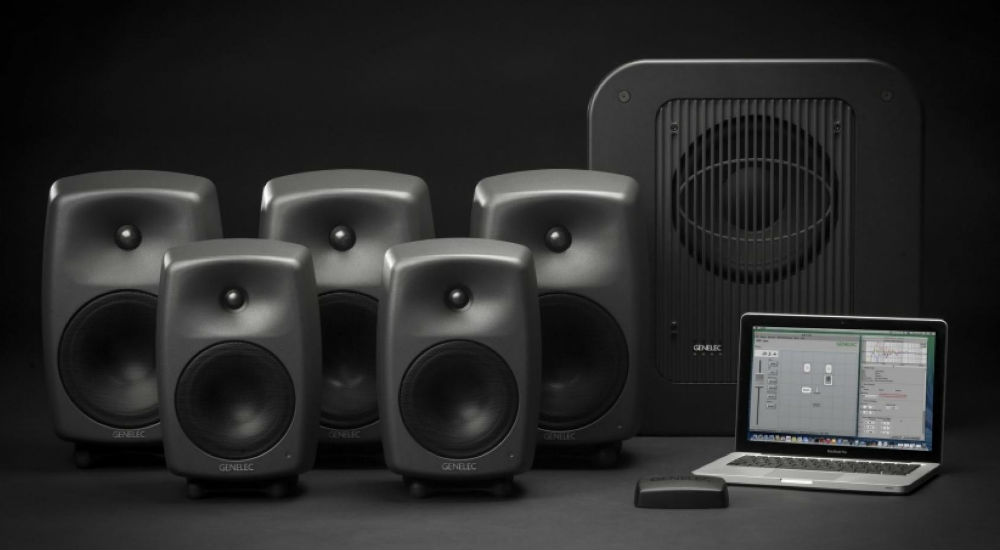Smart active monitoring, made simple.
The topic of monitoring is one of the most important conversations in all of audio, but one that also has a tendency to get meta very quickly.
Existing at the exact intersection where physics, electro-acoustics and human perception meet, monitoring is one of those key areas that most beginner engineers will initially gloss over in a creative haste, before eventually doubling back and spending years trying to figure out why their mixes aren’t translating or why their low end keeps pulling the disappearing act. It’s a slippery slope – one that has the power to derail creativity faster than you can say ‘mixed on earbuds’.
Read all the latest features, columns and more here.
A good monitoring situation will put you on the fast track to glory and inner peace quicker than almost anything out there, while a bad monitoring situation can very easily lead you down the path to audio purgatory – a place where endless mix revisions, rank kick sounds and uninformed +10db EQ sweeps are all part of daily life. It’s a sad, horrible place-some say even worse than Adelaide.
If you intend on producing anything for public consumption, you owe it to yourself (and others) to get your monitoring situation as good as possible. Not only is it an exercise in self care, it’s a decision that is going to bear obvious and immediate sonic improvement to everything you work on.
But where to start? Well for most, the Holy Grail of monitoring (and something that has proven incredibly elusive since the beginning of time) is 100% accuracy at the monitoring position.
This is more of a hypothetical concept rather than a practical reality, but it basically implies that in an ideal world, we would be basing our decision making on an exact, perfect reproduction of our program material-free of the inherent biases and inconsistencies that come along when we add speaker design, open air, room acoustics, listening position and human weakness into the fold.
Realising this kind of monitoring utopia would ultimately mean streamlined/single session workflows, limitless sonic creativity and the best sounding tracks of your life. No longer beholden to approximation, mixing would become less about risk assessment and A/B comparisons and more about consequence free creativity and analogous workflow.
It’s always been the immaculate, unattainable end goal for as long as studios have existed, and yet we may now be closer than ever before, thanks in no part to recent advancements like Genelec’s breakthrough S.A.M (Smart Active Monitoring) technology entering the market.
In an industry first, ‘The Ones’ (and other S.A.M equipped boxes in the Genelec range) employ cutting edge measurement and ‘Smart’ DSP based analysis/calibration techniques to automatically optimise the output of every S.A.M. speaker in relation to the monitoring environment. In English, they quite literally ‘read’ the room, calibrating on the fly and adapting their frequency profile to achieve the flattest response possible in relation to whatever architectural space they are placed. This in turn gives the S.A.M monitors a level of sonic consistency and overall truthfulness, previously thought impossible.
Just this feature alone is already light years ahead of the static ‘three way switch’ approach of yesteryear and if this kind of ‘smart’ room attenuation were the only trick the S.A.M. speakers were capable of, it would already go a long way to improving the average monitoring situation exponentially.
The real kicker with the S.A.M technology is when you take into account how this same active calibration also allows the S.A.M. monitors to acclimate and interact, not only with the room, but also amongst each other.
By employing a combination of Genelec’s own AutCal and GLM loudspeaker management software, ‘The Ones’ (and other S.A.M. adjacent speakers in the range) are able to interact with one another in a way that is nothing short of remarkable, instantly accounting for the complex phase relationships in multi speaker setups and automatically adjusting for crossover phase in sub based systems. This means that the output of all speakers in S.A.M. based system (and the room in which they are placed) present as a united front, offering incredibly consistent time domain characteristics and sonic linearity across the board.
This opens up boundless opportunity, not only in regards to general decision making, but also has the potential to turn traditional workflow and studio practice on its head.
For example, with traditional monitoring setups the so called ‘sweet spot’ (i.e. the position in the room said to provide the most accurate tonal balance in relation to the speakers) is generally a tiny patch of carpet, often located directly between the tweeters. However, with S.A.M.’s incredible capacity for phase coherency, amazing dispersion characteristics and increased off-axis response, we now see this sweet spot grow to take up the lion’s share of the monitoring environment-in turn allowing for accurate assessment and tonal parity from a number of different monitoring positions in the room, thus eliminating a lot of the indecision, conflicting opinion and unnecessary revision that tends to stifle the creative process.
This also creates all kinds of potential for collaboration and ‘mix by committee’ type of situations, providing an accurate, shared vantage point for multiple people in the control room. It also means that theoretically, two engineers with the same monitoring setup could work on the same project across two different studios, bouncing files back and forth and using the S.A.M.’s onboard active calibration to ensure the highest levels of sonic continuity between sessions (much the same way that two bandmates might purchase matching channel strips to record from home, only way, way more effective in giving things a sense of togetherness).
It’s not only the musical types who benefit from this new tech either, the S.A.M and GLM software is also particularly handy for anybody working in post or FX design, especially in immersive or surround setups, where placement of panned sources and their associated phase coherency play a vital role in achieving an effective sounding mix.
The ability to isolate individual speaker groups using the GLM software, without effecting overall tonal balance definitely goes a long way to helping identify troublesome points in the soundstage, a notoriously tricky task and one that often requires excessive cross referencing to ensure proper placement. This is just a couple of examples of the endless practical workflow possibilities this kind of tech can open up.
In summary, while far from the most glamorous aspect of audio, the importance of good, accurate monitoring cannot be overstated. It’s the very lens through which we interact with our work, exerting a macro/micro influence on every single decision we make throughout the production process.
The closer we can get to this hypothetical ‘gold standard’ of reference monitoring, the better our mixes will sound and the easier they will translate to the outside world. Like a greyhound chasing a pretend rabbit, technologies like Genelec’s S.A.M are an indication that we are edging closer and closer to catching what was once thought impossible – perfect sound forever.
Get in touch with Studio Connections to find out more about Genelec.







